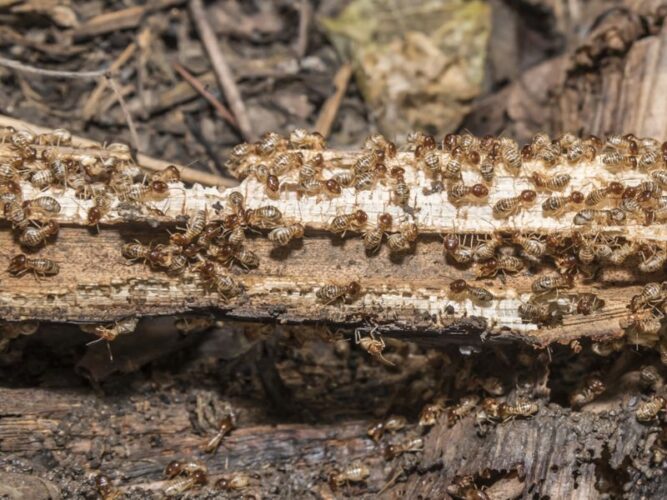Termites are destructive insects that can annually cause structural damage worth billions of dollars. Effective termite treatments and preventative measures are required to safeguard your property from termites. Be that as it may, how frequently would it be advisable for you to treat your home for termites?
The answer is contingent on a number of variables, including the kind of termite, the treatment, and the state of your home. To help you figure out how often to treat your house for termites, here are some general guidelines.
Types of Termites
There are two principal sorts of termites that plague houses in the U.S.: underground termites and drywood termites. Subterranean termites construct tunnel networks to gain access to their food—the wood that makes up your house—in the soil that surrounds homes.
Drywood termites live inside the wood they feed on and don’t require contact with the dirt. They can pervade any wooden design, like furnishings, walls, or rooftops.
Underground termites are more normal and more damaging than drywood termites. They can cause broad harm in a brief timeframe whenever left untreated. Drywood termites can still cause significant damage over time despite being less aggressive and spreading more slowly.
Types of Termite Treatments
There are different types of termite treatments available, but they can be broadly classified into two categories: liquid treatments and bait stations.
Liquid treatments involve applying a liquid pesticide around the perimeter of your house, creating a chemical barrier that kills or repels termites. Liquid treatments can last for five years or more, depending on the active ingredient and the environmental conditions.
However, liquid treatments may not be effective against drywood termites, as they do not come into contact with the soil.
Bait stations involve placing bait devices around your property that contain a slow-acting poison that termites ingest and share with their colony. Bait stations can eliminate entire colonies of termites over time, but they require regular monitoring and maintenance.
Bait stations need to be checked every six weeks and replaced annually. Bait stations can be effective against both subterranean and drywood termites, but they may take longer to work than liquid treatments.
Condition of Your House
The condition of your house can also affect how often you need to treat it for termites. Older houses may have more cracks, gaps, or wood damage that can attract termites. Newer houses may have better construction and termite-resistant materials that can deter termites.
However, no house is completely immune to termite infestation, so you should always inspect your house regularly for signs of termites, such as mud tubes, wood damage, or termite swarms.
How Often to Treat Your House for Termites?
As a rule, ought to treat your home for termites like clockwork in the event that you utilize fluid medicines, and consistently in the event that you use snare stations. However, this may differ based on the kind of treatment, the kind of termite, and the state of your home.
You ought to likewise perform termite examinations consistently for more current houses and at regular intervals for more established houses, no matter what the treatment type.
On the off chance that you notice any indications of termite action or harm, you ought to contact an expert bug control organization as quickly as time permits to apply the proper treatment.
Conclusion
Termites are a serious danger to your property and ought not to be trifled with. You must treat your home for termites on a regular basis and frequently inspect it for signs of termites to avoid termite damage.
The type of termite, the type of treatment, and the state of your home all influence the frequency with which you treat termites. You can avoid costly future repairs and protect your home from termites by adhering to the aforementioned general guidelines.


https://potofu.me/ucpudvls
вот вот такая же история! надо разобраться с этим вопросом!
https://www.grepmed.com/ihhihufubk
Много тут кто согласен
https://linkin.bio/seidel2nhwalter